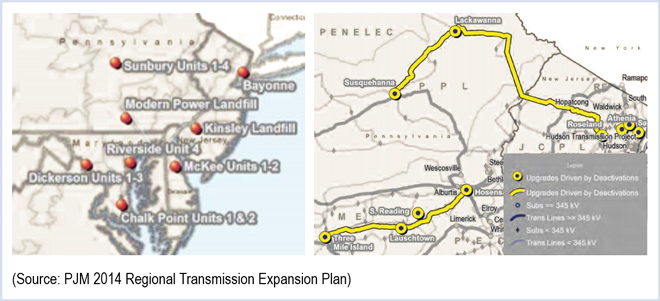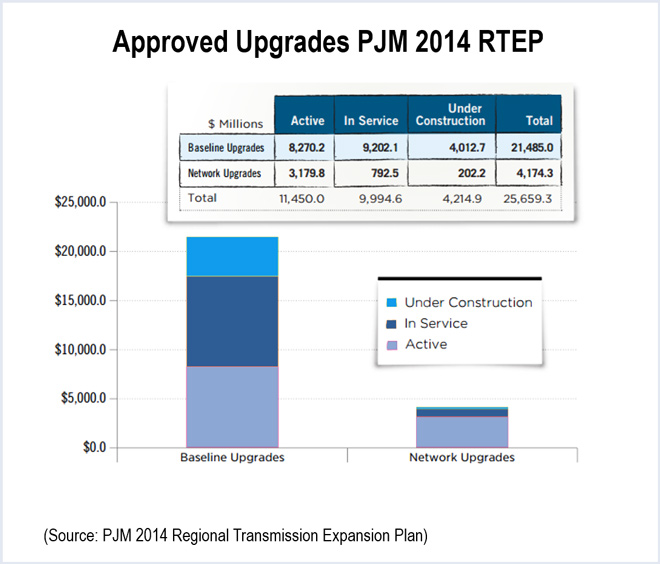By Rich Heidorn Jr.
Flat load growth, the lapse in federal subsidies for wind generators and a slowdown in coal plant retirements have caused PJM to reduce its transmission construction plans by $3.2 billion.
PJM’s 2014 Regional Transmission Expansion Plan report, released last week, provides details of the $1.7 billion in transmission projects approved by PJM’s Board of Managers. The board approved 197 baseline projects totaling $1.1 billion and 148 network upgrades to address reliability criteria violations at a cost of $605 million.
But these new projects were more than offset by the removal of 651 network upgrades totaling $4.7 billion and 40 baseline projects estimated at $177 million, resulting in a net reduction of $3.2 billion from the spending anticipated at the end of 2013.
Generation Withdrawals
PJM said the network upgrade cancellations resulted from the withdrawal of 212 generation interconnection requests totaling 15,302 MW, one-quarter of them for wind turbines.
Generation withdrawals can reflect developers’ response to capacity auction prices. PJM also took note of the boom-bust cycle of wind development, based on the availability of the federal Production Tax Credit. The most recent iteration of the PTC covered only projects under construction by the end of 2014.
Network upgrades allow customers to interconnect to the PJM grid and obtain capacity rights. Such upgrades are recommended to the PJM board based on system impact studies, after developers receive facility study agreements.
Slowdown in Retirements
Baseline upgrades include both market efficiency projects to reduce congestion and reliability projects needed to correct violations, such as those identified in thermal and voltage analyses.
PJM said the reduction in baseline upgrades reflects flat load growth and a slowdown — perhaps temporary — in retirements of coal-fired generation. The RTO received 31 generator deactivation requests in 2014, totaling about 4,300 MW, down from 14,444 MW in 2012 and 7,745 MW in 2013.
The retirements were largely driven by the Environmental Protection Agency’s Mercury and Air Toxics Standards, which take effect this year. PJM has begun analyzing the impact of EPA’s proposed limits on generator CO2 emissions, which are expected to create a new wave of retirements. (See related story in PJM Transmission Expansion Advisory Committee Briefs.)
The 2014 RTEP includes 27 transmission upgrades in PJM’s Mid-Atlantic and Western regions to address retirements. The upgrades include both new and upgraded transmission lines, transformers, shunt capacitors and substation improvements.
Since 1999, PJM’s board has approved almost $25.7 billion in transmission projects, including $21.5 billion of baseline transmission upgrades and $4.1 billion in facilities needed to connect more than 60,000 MW of new generation. Almost $10 billion of those projects are in service with an additional $4.2 billion under construction.





